For our second sightseeing day, we planned to visit sights at Prague Castle. The basic ticket covers four sights: St.Vitus Cathedral, the Royal Palace, St. George Basilica, and Golden Lane, a worker’s housing area preserved in its ancient state.
There is also St. Nicholas Church near the castle as well as its bell tower, and St. Vitus Cathedral’s clock tower. Of course, we always try to view sights as we come across them. Another very full day.
12:18 pm to 7:04 pm. 5.57 miles, 15,244 steps, elevation +267 feet. Partly sunny in the morning turning more cloudy, but warm.
Richard’s Relive video is here, including his views from towers he climbed: https://www.relive.cc/view/vdOREoQEQKv


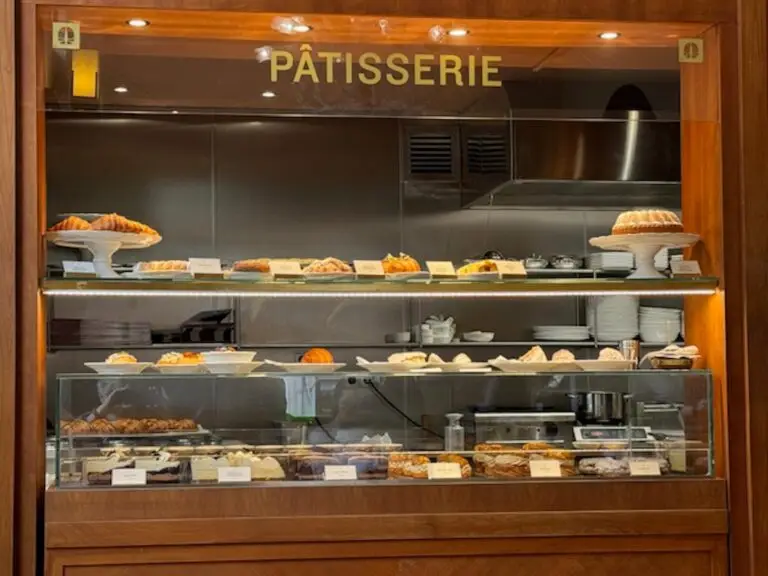




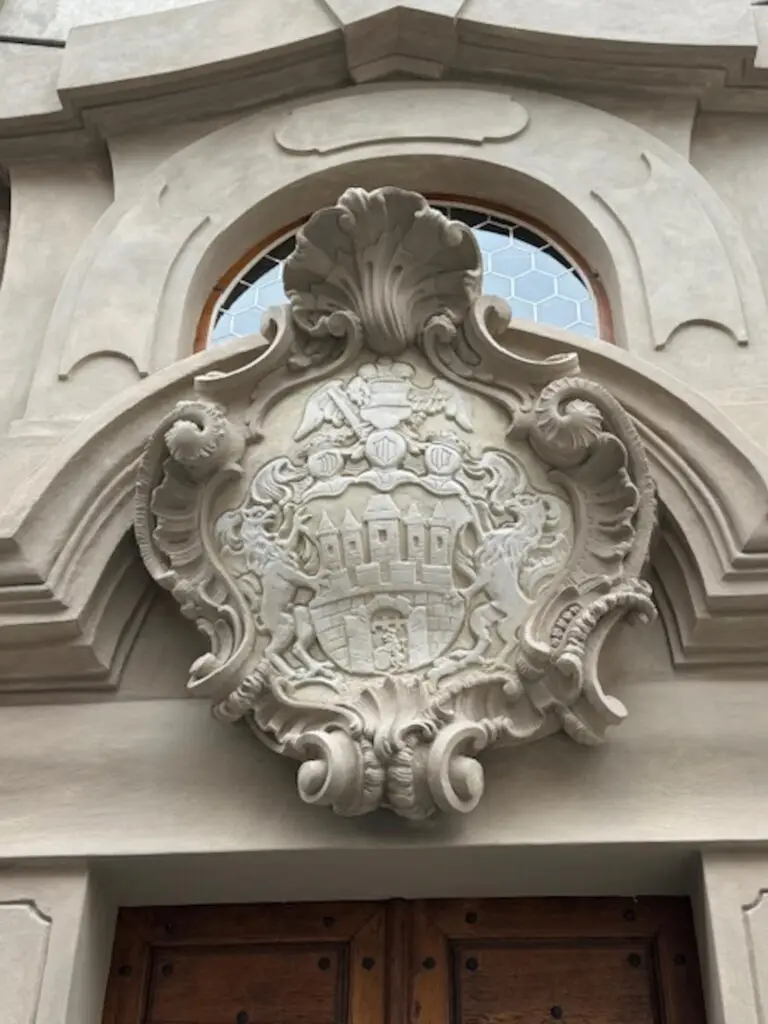



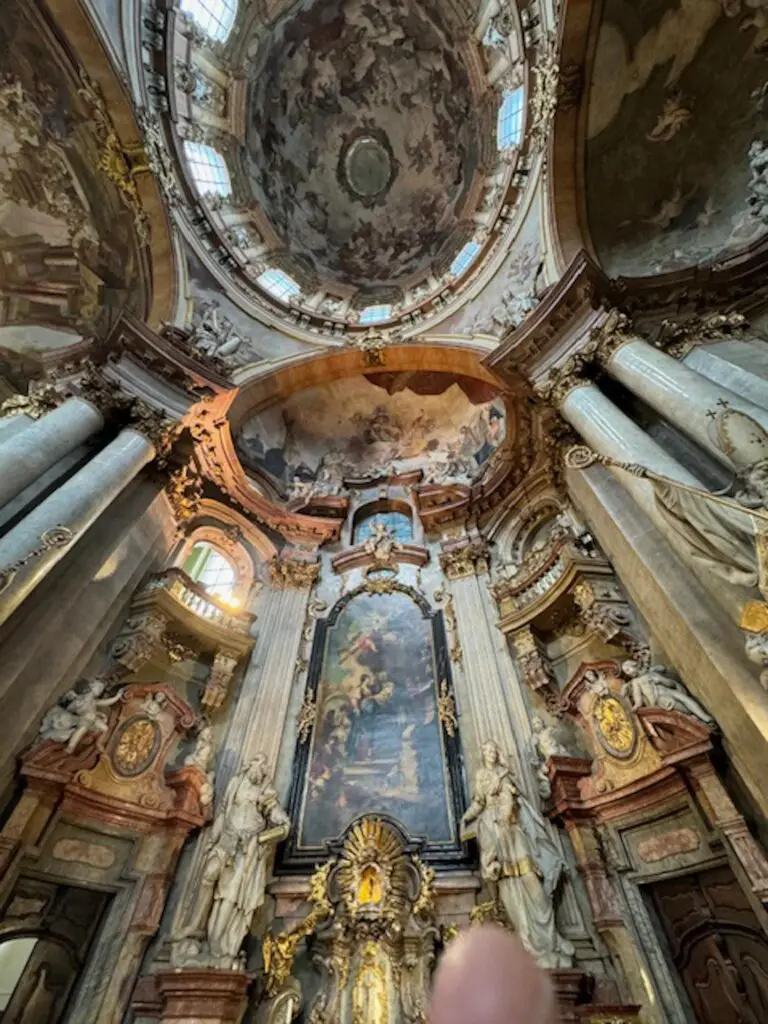


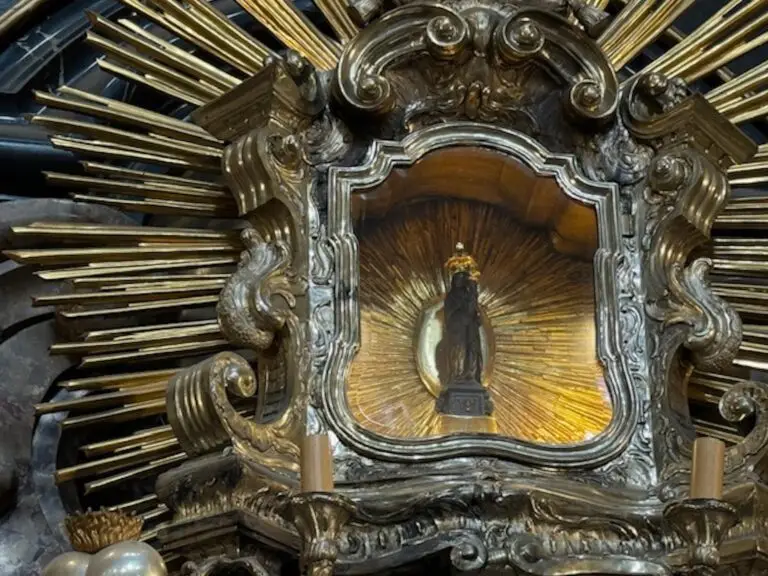






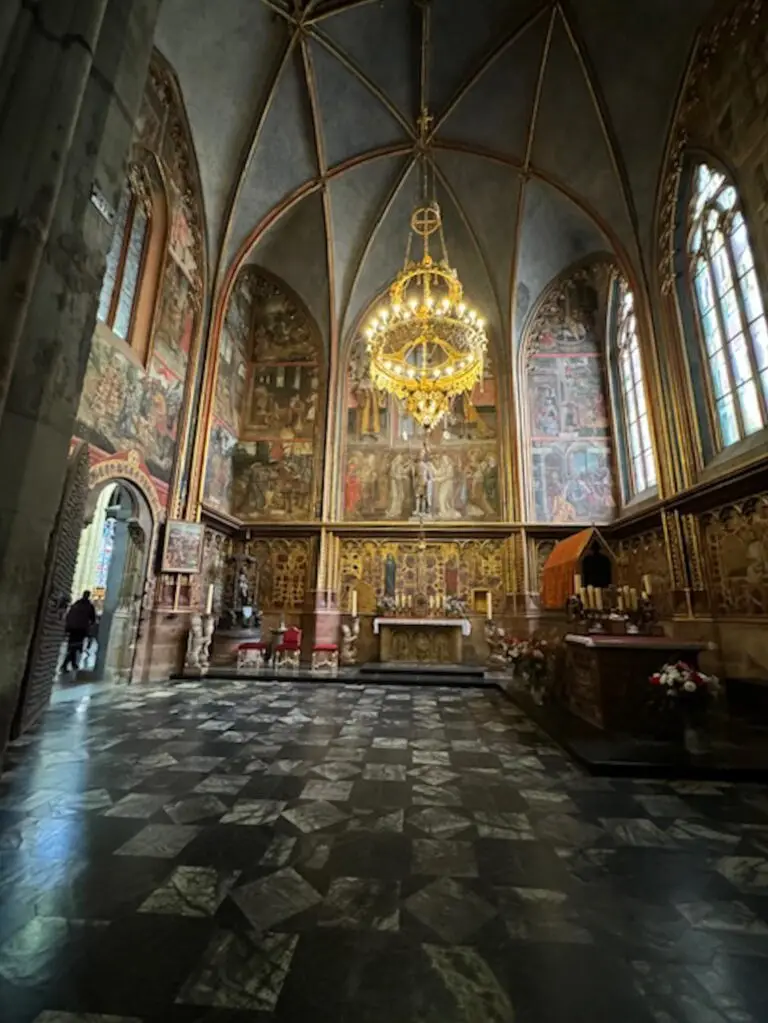




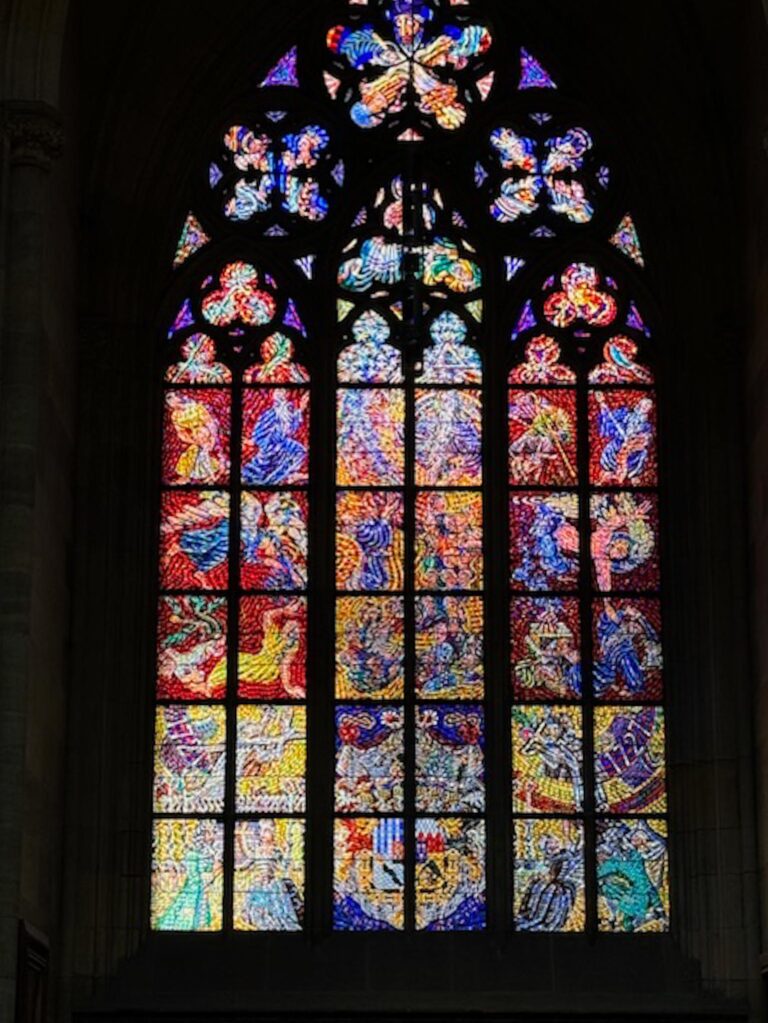

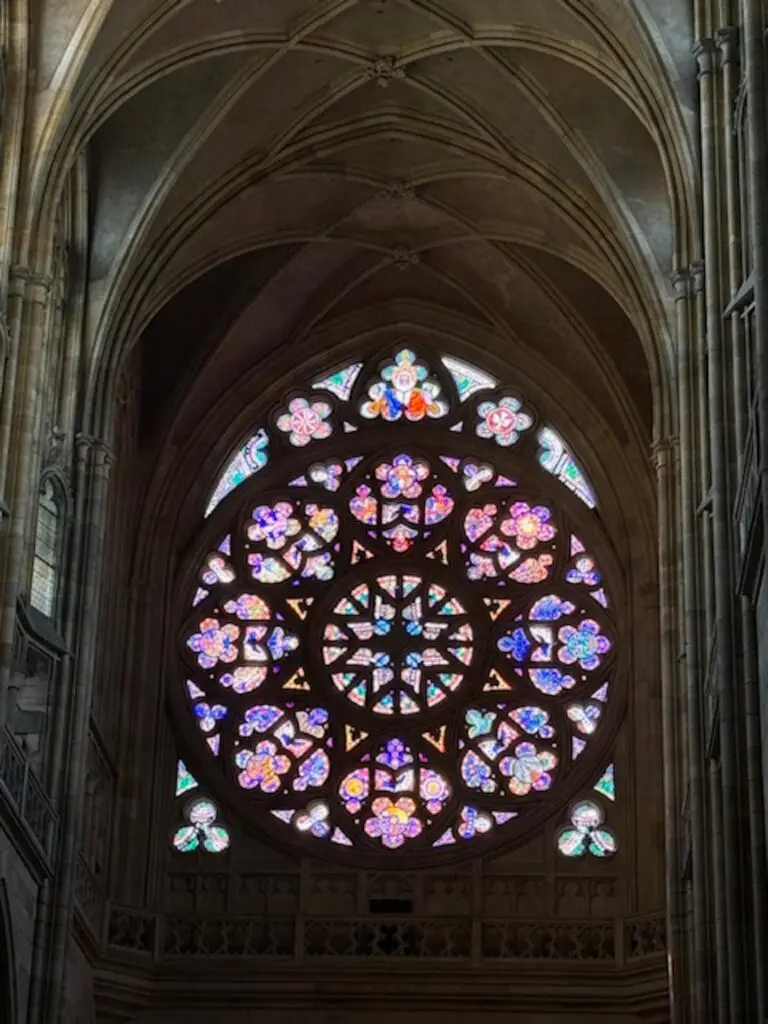





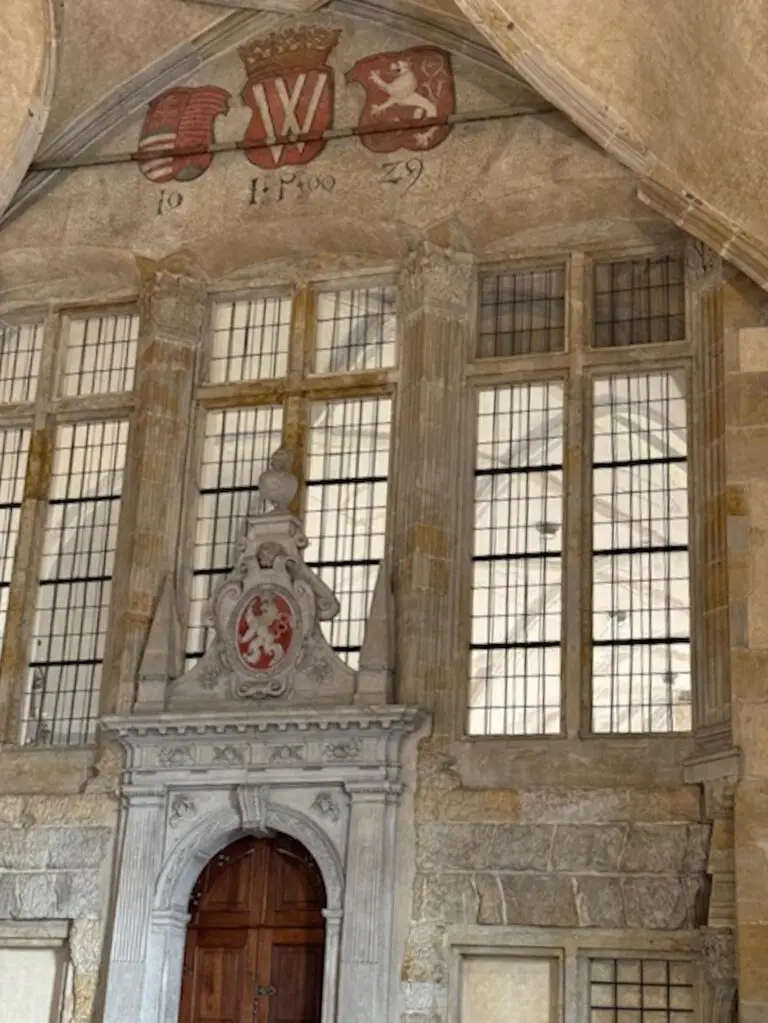



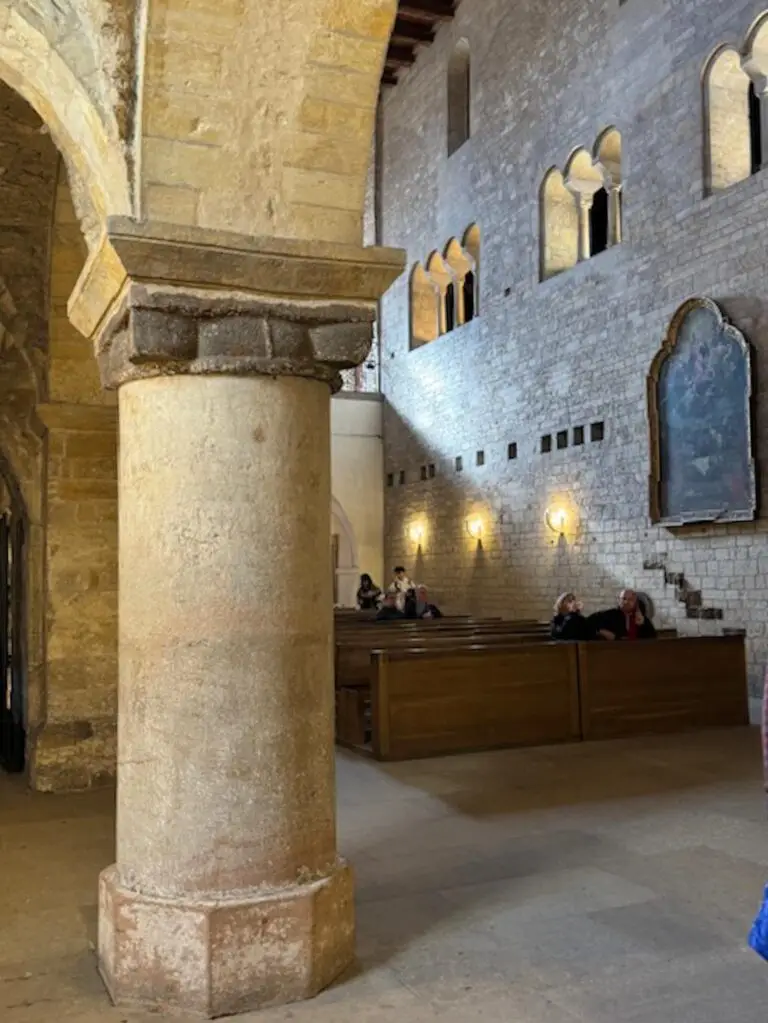


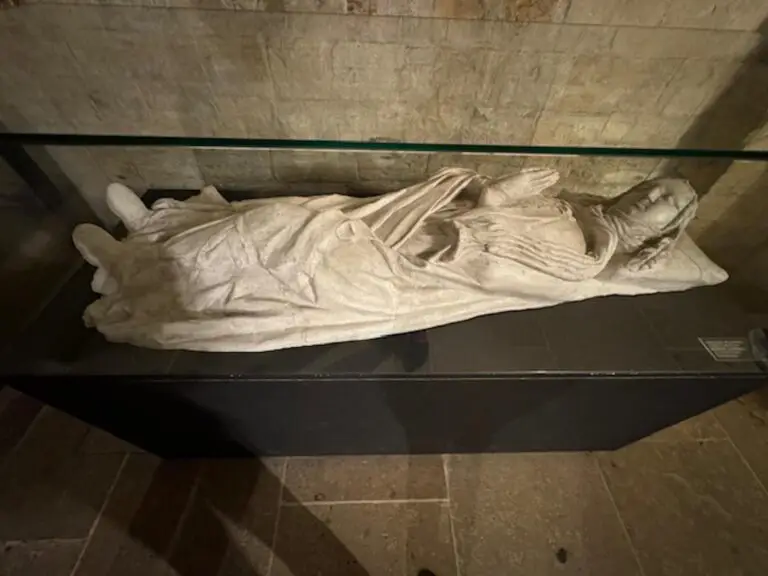
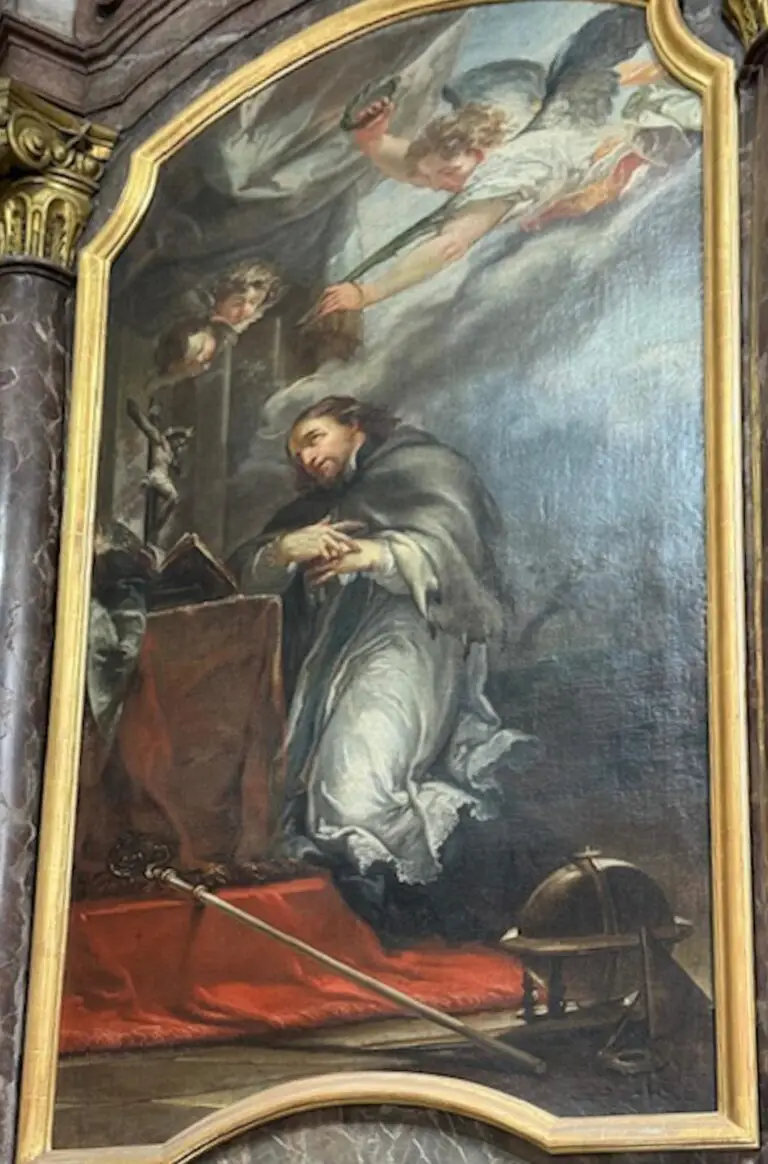







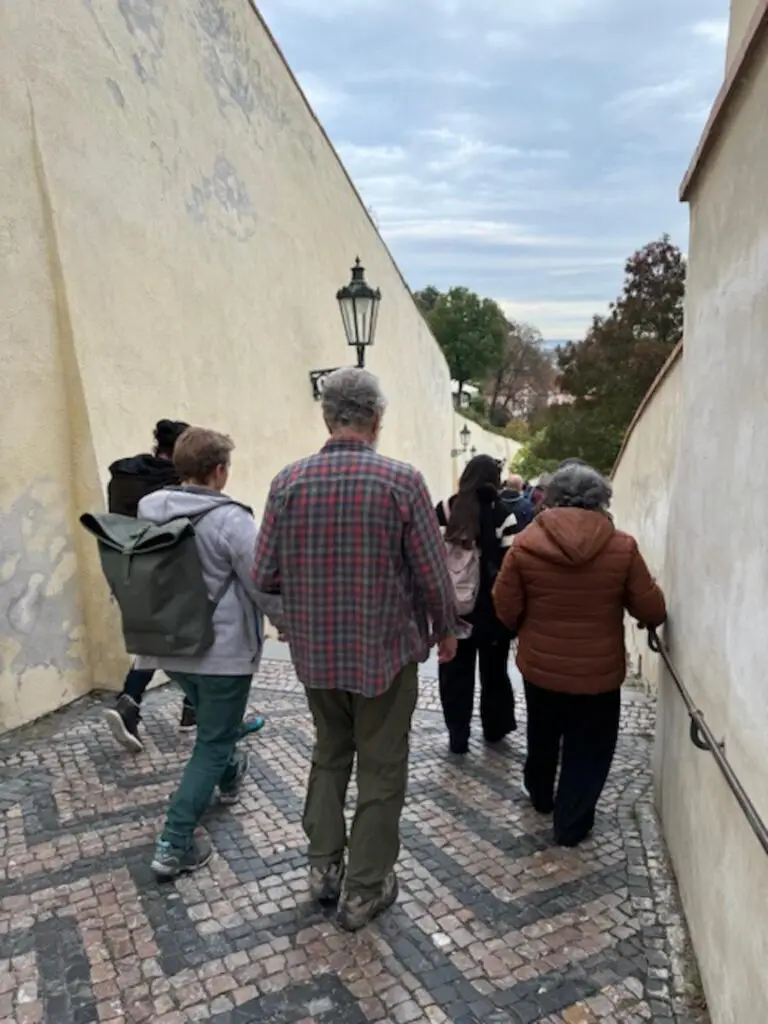


4 Responses
Goodness, you have packed a lot in in two days!! so many beautiful sights. And so old, hard to wrap my mind around all the history of this place. Come home soon!
So many of these cities have so much religious as well as regal history, and they all intertwine! No way for me to keep everything straight but we just look for the most obvious. There is much more research to do before I come close to understanding. We fly tomorrow—so sad to leave but I know we must come back.
Thought St Nicholas was especially spectacular when we visited it. Loved your pictures. Looks like you will manage to see all the major highlights within your schedule. You are amazingly well organized.
Dan
We enjoyed both of the St. Nicholas Churches — the one with the crown chandelier and the much older church with the bell tower (nearer the castle). I doubt that we saw all the highlights of Prague, and I would like to go back to see some more of the outlying areas. It’s good to have trips still to plan.